Time for clamshells
Flip first morphed into the clamshell form-factor within Motorola, and so the company never let the halo of the pioneer of innovations go at times when the mobiles phones were only at the beginning of the path. Seven years after the release of the first-ever flip-armed cellular phone in 1989, on January, 3 in 1996 Motorola came up with the world’s first clamshell, specifically the StarTac. Over at the company they decided to officially underscore adoption of Star Trek’s ideas, that’s how come they named it like this.
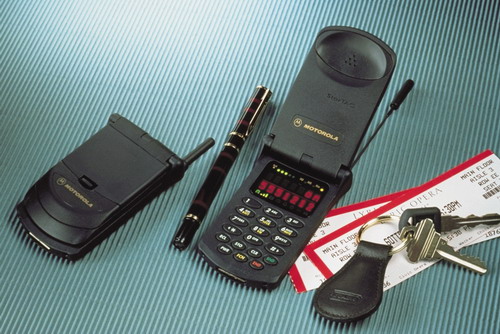
The model made a splash on the market and climbed all the way up to the bestseller rank, which was repeated only in the year 2004 after debut of the “slim” clamshell housed in a metal casing - Motorola RAZR. Both products ushered in a new age for Motorola. Quaint form-factor aside, the StarTac had dimensions on its side, proving to be diminutive as against its brothers in arms, yet maintaining just the same capabilities. Often it ended up compared with a pager, and its weight was also a big focus – 88 grams. In order to emphasize its very pocketable dimensions, Motorola referred to it as “ready to wear” or “wearable”. The handset could be thrown in a shirt pocket or clipped on a belt.
Flicking the device open or closed meant an action, not only physical, but also the ability to answer a call or, hang up. Much like the active and passive flips found in the previous generation models, clamshells came to offer auto call answer upon unfolding. Menus of the today’s handsets enabled you to manage this action, making the phone do nothing when opened up. For want of outer displays such feature was in dire need, however it doesn’t make much sense these days.
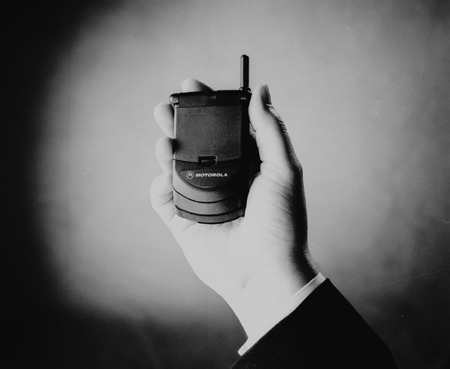
With the StarTac launch, a mobile phone became a truly personal device, which is why it grabbed such feature as the vibrating alert (trademark for this feature - VibroCall). Motorola, as well as other makers, was widely employing this technology in pagers, yet up until that moment it had never debuted on a mobile phone. The handset’s petite size did hurt the uptime it could squeeze out of the standard battery, and the company proposed a more capable cell as an additional accessory. This solution, first seen on the StarTac, would then be embraced by other manufacturers – the Korean companies would grow fond of this, specifically for Samsung it wouldn’t be a rare occasion to throw two batteries into the retail package in view of meager battery life brought about by the pursuit of eye-candy and skinny profile.
The handset was also shipped with a headset, which wasn’t something out of this world for the market – many devices out there boasted similar solutions. But it was Motorola that first came putting into the sales package. The fact that with most phones we get a headset out of the box doesn’t surprise any more. Yet for 1996 it was very novel. The device’s price tag during the first year was worth about 3000 USD. With time the StarTac family was expanding with various models, accumulated sales for the handsets released under this trademark accounted for 75 mln. For the period when the market was only emerging and handsets were selling times worse than today, it is an absolute record..
Clamshell – a handset consisting of two folding halves, at that the keypad is hidden inside the device. To get access to the keypad you should flip the device open (vertically-directed action). Due to the specific design, the main display is located inside the clamshell’s top piece. At the same time, such devices may come with additional screens mounted on the exterior surface.
Though in the sense of technology, the concept of a folding device wasn’t all-round new – in 1979 a British designer Bill Moggridge proposed the idea of similarly built computer. The model he came up with saw commercial release in April 1982 in the form of GRiD Compass 1100 computer, retailed for 8000 USD back then, which really narrowed the audience to originations affiliated with government, specifically, NASA. Over at NASA’s page there is a great picture from a space shuttle, where John Creighton holds this laptop. But the most remarkable thing is not the photo itself, but the discernible image of Star Trek’s Dr. Spock. The influence this TV show had on the development of the technology sometimes seems mysterious. For example, the Taiwanese company, HTC, named one of its slim RAZR-esque folders StarTrek.

The name of this form-factor comes from the resemblance with the two-fold shell of a mollusk. In informal language they often use “clam”, which is a short variant of “clamshell”. Meanwhile, not without the help from the Finnish marketers, this form-factor is also dubbed as folder type phone. Both terms mean the same, so you shouldn’t be confused.
The names actually can tell much, particularly, how the consumers’ preferences altered over time and which companies were more aggressive in this segment. Having rolled out the StarTac, over at Motorola they didn’t care about a term that would define this class. The press of those times was calling these handsets “fold out” models. The “clamshell” name came much later, along with the foray of the Korean companies, Samsung in the first place, into the European market. With the name taken from the native market, these companies did well at separating own solutions for the competition, which was composed of Motorola’s products in the 90ies, as other makers loathed this form-factor. In the year 2000 Samsung began storming the European consumers, about at the same time with the release of Samsung A100, which had very moderate sales. The real success was brought by Samsung A300 with two displays onboard, which was quaint for this device type back then. The beginning of 2001, when this model arrived in the market, can be the zero point of “clamshell” term history.


The response from other markets followed in 2003-2004, when clamshells made it to their ranges. But only with the release of Nokia 7200 in Q1, 2004 the “folder type” term got put forward. It had been around, though out of use, ever since the StarTac, yet at that moment they ejected a new life into it. They used these words forcedly, as the “clamshell” was firmly bound up with Korean companies, chiefly Samsung. Nokia’s first folder experience never made an iconic product, imperceptibly leaving the only trail in the form of the device type name, a counterpart to the original term.

On the StarTAC launch it was clear that Motrola hit pay dirt in the mobile phone market. However, it didn’t take the troubles a long while to come – early in March, 1997 Qualcomm rolled out its model Q, which shared so much with the Motorola StartTac in the design department and became the history’s second clamshell. Expectedly, Motorola’s reaction was strongly-worded, the company’s Senior Vice-President, Wolf Pavlok said that it was a “blatant copy”. And they took legal action immediately – it is interesting that in the suit Motorola pointed that “a phone’s keypad can take various forms, but a copy of the Motorola StarTAC, which doesn’t seem to be coincidence”.

Already on April, 24, the Californian Court, US, decided in favor of Qualcomm. The legal decision read that the Q’s design was thinner, whereas the StarTAC employed rectangular shape. Also, the court stated that Motorola can not monopolize the form-factor of clamshell. In fact, this suit “Motorola vs Qualcomm” gave the green light to other companies in their efforts to create similar products. If this suit had never taken place, though, then probably other makers wouldn’t have risked coming up with folder-style handsets.
Nevertheless, Motorola clamshells’ popularity has never gone off the peak. Today’s generation can’t recall the trailblazer of this form-factor and frequently give this title away to Samsung. However, Motorola is a kind of the trend-setter for the clamshell market.
The StarTAC became an icon – it made countless appearances in movies, got featured in tons of articles. The truth is, this devices was the centre of a whole cult, which is not a rare occasion for the first device far ahead of its time. A newsworthy collision happed in the Korean market, where the StartTAC was one of the first cellular phones at the time when few had the privilege of mobile communication. Designs mimicking the original, yet presented by local manufacturers poured oil on flames, so that the original StarTAC became equal to life success and prosperity. That is why in 2004, exclusivelyfor the South Korean market, Motorola launched the StarTAC 2004, which was available in two editions – ordinary and adorned with precious metals, specifically, the keypad was made of gold. And this device was a success.
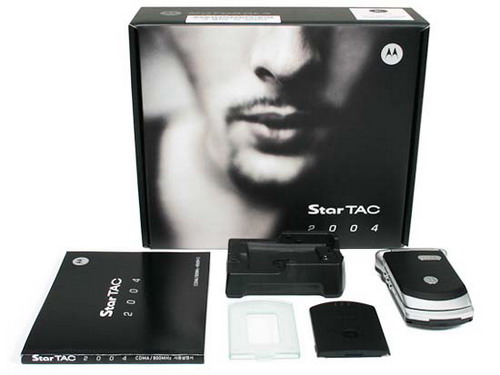
The experience of the StarTAC 2004 made it possible to release the StarTAC III (MS900) in April, 2007 – another iteration of the legendary handset. And once again, available in South Korea, where the original clamshell is still acknowledged and valued.
It’s worth mentioning that in the middle of 2006, in his interview to Mobile-Review.com Ignacio Germade, Motorola’s design director and the head of design centers in the UK and Singapore, when asked about possibility of release of retro-styled models, answered:
«Our company is looking into future with confidence and we’re oriented only on that. That’s why it’s very unlikely that part of our inspiration will be acquired from the past. Cellular phones became massive product not so long ago at all, so that truly classical models would appear, and modern redesign of which could have been truly interesting. In case we talk about limited editions, than all I can recall is our small experiment in South Korea, where our first clamshell phone “StarTac” gained cult status, and after few years after its release it became used as trendy accessory. We decided to go towards feedback from our users and released additional lot with updated specifications. But this of course is exception of rules, not some sort of tendency». .
Mobile vintage is a new trend, which still requires in-depth research. But the fact is: people buy long in the tooth handsets just for the sake of completing collection. What is in the basement of this urge – nostalgia, old memories?! This is yet to be revealed, but it won’t be long before the launch of revamped versions of the classic devices – in the year 2007 the market already has reached the point when it has its own history and people who want to learn about it.
The status of the original StarTAC is also born out by the fact that in 1999 Motorola released into the wild StarTAC Clip-On Organizer, a stand-alone device acting as an electronic organizer, which could be linked up with the handset and thus granted access to the phonebook. But the organizer’s size was comparable with the today’s phones and put together, the set didn’t look particularly petite. Technically, the StarTAC Clip-On Organizer is the first smartphone, or its prototype, for Motorola – it was sought-after in the US, whereas in Europe passed unnoticed.


Among all clamshells there were two cult phones, one of them – Motorola StarTAC, and the other – Motorola RAZR. While the former established this new form-factor, the latter gave birth to a whole new trend in the development of handsets, specifically, “slim” phones. In 2007 Motorola elaborated design of a thin folder in 6 months, at that one of the conditions it was observing was use of premium-materials, for example, aluminum. Though the stumbling block for such skinny solution (13,9 mm against market’s average thickness of 16-18 mm) was the keypad. In the end they approach a small Chinese company specializing in calculators and with its help designed a metal slab with minimal keys height. The RAZR’s keypad has become the handset’s signature – on its release date, none of the phones could show off something similar. Though lack of patent for this keypad left no obstacles for other makers on the way of duplicating this solution and offering own RAZR-esque products in one or another way.

But the history always repeats itself, and the RAZR could not avoid scandals after it’d been released. Everybody got into replicating the model nearly outright, but any development process is time-consuming, so only the middle of 2005 saw numerous releases of the counterparts. Motorola RAZR was slotted for June 1, 2005 in South Korea. On the same day, Samsung rolled out its own offering going by the name of Blade (Samsung V740), which looked so like the original RAZR. It’s curious that the name of the slim devices line inside Motorola was… you guessed it, Blade.
In his interview to NewYork Times, Motorola’s Vice-President Michael Tatelman said: «We are very flattered that other makers imitate our design. We are an innovator in design and style in the business and one of the greatest companies in the world imitated the design. Razr is the original». Also he added that he was convinced about the RAZR’s success and greater than its competitor’s sales volume on the Korean market. And his forecast really stood the test of time, the RAZR was selling better than Blade and the market always experienced shortage of the former (despite worse specifications, the Korean edition ditched Bluetooth).
Also he added that he was convinced about the RAZR’s success and greater than its competitor’s sales volume on the Korean market. And his forecast really stood the test of time, the RAZR was selling better than Blade and the market always experienced shortage of the former (despite worse specifications, the Korean edition ditched Bluetooth).
For Motorola, it all came back to where it had started, occasionally, its older employed even had that deja vu feeling. Much like the case with Qualcomm Q, the handset’s design got copied, and the company could not, or better to say, did not want to do anything about it. In 2006, the RAZR’s clones flooded various markets and the company just let them be. One of the reasons for doing so was ever-growing sales of the original RAZR. Whether intentionally or not, all manufacturers churning out RAZR-esque models, gave the original free advertisement. This handset eventually claimed the title of one of the most sought-after in its segment, and kept selling itself for 3 years, which is sort of a record for a single device (we mean the V3 RAZR, rather than the whole series). In view of the increased mobile phone market volume compared to the times of the StarTAC, saying it was a similar success wouldn’t make much sense, but one thing is for sure, it took the world by storm. The model has the maximum possible life cycle; the world of mobile phones has adopted from RAZR the direction that won’t lose its relevance in the years to come, slim profiles have suddenly become all the rage within all form-factors. Also all vendors have started utilizing wafer thin RAZR-style keypads.
Milestones of the clamshell-style form-factor
Apart from the iconic clamshells, there were also some milestone models remarkable for a particular technology, for being the first to display promising solutions. They didn’t leave long-lasting aftertaste, unlike the abovementioned handsets, yet brought to life whole directions and designs. Samsung has always been in the front row, when it comes to clamshell activity, it own most of the novelties that eventually have become ubiquitous and made it to solutions of other makers.
May, 2001, Samsung A300 – first clamshell sporting an external display;
September, 2001, Samsung A400 – first clamshell for women, designed after a powder-case, and having a flower on the surface.
June, 2002, Samsung T100 – first clamshell with internal color display;
June 2002, Samsung T200 – first clamshell with automatic opening/closing mechanism brought about by the motor built in the hinge, function’s name – AutoFolder;
January, 2003, Samsung T500 – a clamshell for women encrusted with 32 Swarowski stones;
February, 2003 Samsung S300 – first clamshell with two color displays.
A glimpse of the today’s market will tell you that Samsung anticipated all major trends in the period between 2001 and 2003. These days, vast majority of clamshells come with outer display and enjoy color screens, which is fair enough. In 2006 the segment of handsets for women housed in the folder-style form-factor accounted for 25 models and was on the rise. Dressing up phones in Swarowski crystals has grown into a new kind of business in some regions, which occasionally lends terrifying looks to handsets. Finally, automatic folder mechanisms were widely implemented in Panasonic’s line in 2005, some of the Nokia’s models also adopted it, for example the Nokia 6131, in the second half of 2006.
Nokia came into the clamshell segment with one of the latest waves, however by releasing the Nokia 7200 it left no doubt that the brand and loyalty of consumers easily outweigh technological talent. The Nokia 7200’s design wasn’t particularly prosy, at the same time textile or leather framings made this handset a newsworthy event in the market.
The Nokia 6131, being the first mass-market offering to feature that (leaving out S60 smartphones and Nokia N93), had no cover glass on the internal display whatsoever. The company did so in order to bring production costs down, assuming that fold phones were not sensitive to the cover glass and wouldn’t suffer from letdowns of build quality or something. Many clamshell-style offerings from Nokia in 2006-2007 have no cover glass either.

Sony Ericsson also made a late call with entering the clamshell market – its debut was marked with the release of Sony Ericsson Z600. The handset boasted interchangeable faceplates, which wasn’t par for the course for phones utilizing this form-factor. Late arrival in the market forced almost the whole range that followed after the Sony Ericsson Z600, to sway towards women; the maker sharply segmented its clients. It is worth noting that Z-labeled models were positioned as solutions for women from 2004 to 2007.


Subtypes of clamshells
Technically, the clamshell type should also include a handful of communicators, specifically Nokia’s offerings. Bearing visual resemblance to folders, they differ much in functionality when flicked open. Here, you need to open them up not to answer a call, but access the main display and thumbboard. As you see, functionality makes all the difference, and it is safe for us to single out communicators into a separate class. Regardless of size, all these devices fold open in landscape mode, which is due to the thumbboard and the display layout.
Swiveling top part – a simple turn
There were many products basing off the concept of folding halves out there, yet the makers ushered in some own flavours. The first and most obvious solution was shape-changing the hinge, so that the top part of the clamshell could be turned around. This idea was picked up by the Korean manufacturers, even more, they had a race which one would come up with first phone of this kind. LG 7070 started shipping in the Russian market in May, 2003 and Europe got it a little later. At the same time, Samsung’s offering – Samsung P400 - identical form-factor wise, hit the market a month later, only in June. But initially both handsets were meant to arrive in the market on the same day.

The main point in having a swiveling top half is omitting an outer screen – if the user wants it, he can turn the internal display faceup or, conversely, handle it in a conventional fashion. Most consumers, though, took this as another quirk and never fell for it. Indeed, turned up, the screen picked up smudge in no time, which lent the device somewhat pared-down feel. This form-factor didn’t naturalize – two displays were much handier, and these models were favored by the mass market. From that point on, joints were no longer an option.
Rotating top part – something new for camera
In summer of 2003, LG carried on with form-factor experiments by putting the camera on the hinge end, which added new usage scenario. Similarly to some cam coders with flipping display, their phone could do just the same thing. In other words, shooting with a mobile phone was getting to look much like the experience stand-alone cameras provided. But the fact that the handset packed a mediocre VGA unit couldn’t possible make for quality shots and thus limited the phone’s use in this way.
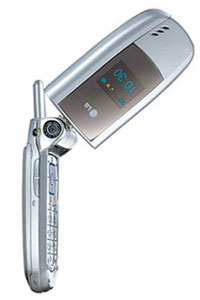
The idea of such swiveling displays got ditched for some time, until in June, 2004 Nokia picked up the dropped flag with the debut of Nokia 6260, a phone that features a rotating display and a side-mounted VGA camera. In future the company would develop this area and morph the form-factor.
July, 2005 saw the Nseries range’s flagship packing unmatched imaging capabilities among all Nokia’s handsets – the Nokia N90. This model had to be a proper response to the launch of the Sony Ericsson K750i, which was a big event on the market, in fact, this very model can be considered as the first spark that eventually led to the boom of cameras in mobile phones. The first mass-market device that provided adequate imaging capabilities back then. Nokia’s designers were not only after a decent-looking solution, but also offering the end-user some sort of action, that would bring about a firm emotional bond with the product. In any folder it is presented by the flip action, but maybe, there is some way to enhance it?
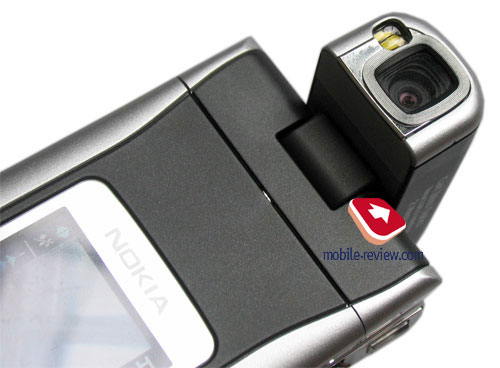

In the N90 the camera module is found on the top end and made rotatable. If you put the handset upright, you will be able to turn the module by 270 degrees until it gets fixed. This allows changing viewing angle when shooting, which is quite unusual – you no longer need to move the handset, instead, just swivel the camera. Along with some enhancements, there were obvious mangles as well – it was impossible to handle the main screen in folded state, when it was turned face up and the keypad was underneath, like in the Nokia 6290 (this makes for better reading experience and does some good to a couple of other applications as well).
The outer display rendered full swivel action of the top part needless – now it rotates only sideways and can’t be set in a way when the internal screen is on top. In this condition the handset does share much with a cam coder, it even looks like one. Being a really offbeat solution in the sense of design, it was then iterated in the Nokia 3250, which was a candy-bar, rather than a folder, with swiveling camera module as well.
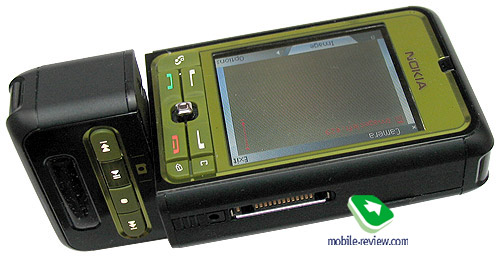
The 2005’s offering, Nokia N92, which was the first phone to boast a DVB-H-tuner onboard, enjoyed the same swiveling display, however this time around it could be folded sideways, revealing the keypad and at the same time allowing for landscape display mode. This model has never made it to the market and got stuck at the prototype stage, being used for DVB-H services tests in Finland and some other countries.
In April, 2006 during its show in Berlin, Nokia rolled out the Nokia N93, which was its next video and imaging flagship. In this device they were aiming at maximum resemblance with cam coders, that’s why it housed a folding display, but with the possibility of going into landscape orientation, which was decent for watching video.
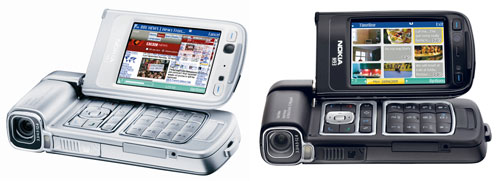
Rotate – swiveling display
My first experience of playing around the rotate form-factor came about unexpectedly – before my birthday I went to Europe on business and accidentally called at Motorola’s office. Back in November, 2001, Motorola’s major focus were clamshells, and therefore it was even a bigger surprise to me to find something out of the ordinary on a table – the phone didn’t have a keypad, only a round display and three buttons beneath. It puzzled me only for a few seconds, though – punching the top lid sideways opened the handset. Over at Motorola they called this mechanism “rotate” and prepared this solution for the fashion segment and being one of the company’s top-of-the-line products. It’s an irony of fate, however, as every time Motorola gets “serious” about making some solution the flagship and maintaining a good price for it for a while, something always happens. As a rule, this product goes through a series of substantial price-drops, regardless of popularity on the market. This also held true for Motorola RAZR, though explaining the reasons for that will take much paper and that’s why we won’t delve into that.

Motorola v70 got ahead of its time, but never became sought-after on the market, and didn’t go over well. Motorola took its second shot in 2004 – inside the company this model went by the name of the R880. It is remarkable that by the moment it was released, they had shifted to a new classification system, and the handset had been meant to top the R class, but eventually got a neutral name - Motorola v80. The announcement took place in January, 2004 in Cracow; the v80 started shipping in May.


The product’s flavor was not only its ability to rotate open, but also 90-degree turns, that switched the phone into the camera mode. Opening the handset this way, you engaged the VGA camera and could start taking snaps outright. None of other manufacturers has implemented this feature in any rotate-style handset after that. Other things of note include the haptics feature – there was a strip mounted along the sides, whose twinkling was linked to currently playing music or call alert. This queer functionality injected life into a whole new direction of emotional handsets.
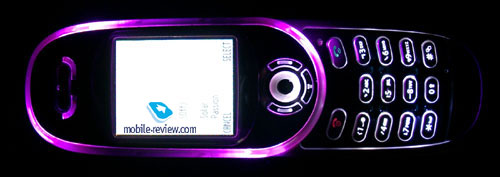
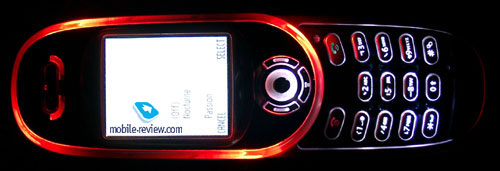

Before its debut in Europe, the rotate form-factor made several appearances in Japan, where these devices were called “swivel”, and the European had nothing against following this. In 2004 Sony Ericsson released the S700i for the European market and gave the same mechanism “Jack Knife” name. All other models styled in this form-factor ended up with this term identifying the mechanism they packed, however today this term is not widely spread.

It is quite another matter though, that when Nokia came up with its first rotate-style handset, specifically the Nokia 7370, “swivel” name became all the rage, but due to known reasons of associating own solution with the competition, they could not accept either.
Rotate (swivel, Jack Knife) – the form-factor, when the handset comprises two halves that move apart from each other in either side (lateral movement). Difference from sliders – direction of movement, that’s all.
To be concluded…
Related links:
Eldar Murtazin (eldar@mobile-review.com)
Translated by Oleg Kononosov (oleg.kononosov@mobile-review.com)
Published — 04 June 2007
Have something to add?! Write us... eldar@mobile-review.com



























